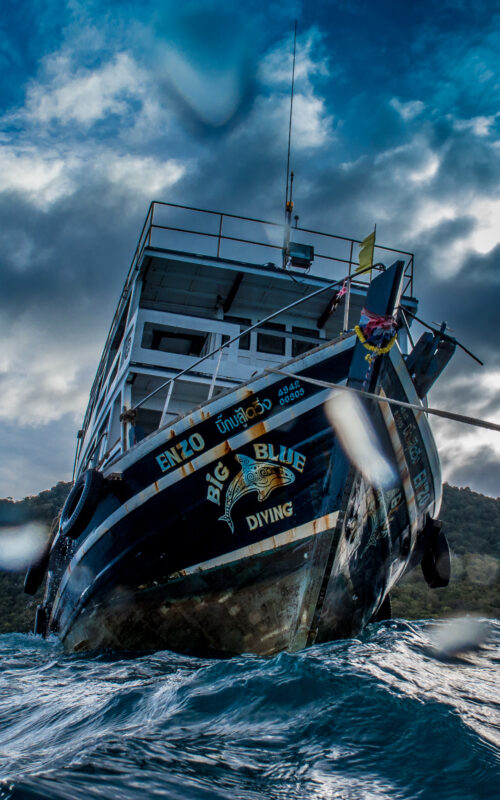Big or Small? The Eternal Question
Dive centers come in all shapes and sizes, much like the fish you’ll soon be ogling. Small operations offer intimacy: just you, your instructor, and maybe a curious clownfish or two. They’re great if you value personal attention or just prefer life on a cozy little boat.
On the other hand, larger outfits bring camaraderie and comfort. The big boats are like floating party buses for divers—roomy, social, and, critically, far less likely to trigger seasickness (a handy feature when you’d prefer to focus on your regulator rather than your breakfast). Plus, they attract a lively mix of people, meaning you’re as likely to leave with lifelong dive buddies as you are with a fresh set of skills.
Personally, I’d lean towards the social route. After all, half the fun of diving is swapping tales of jellyfish dodges and near-misses with Titan triggerfish over post-dive beers.
The Great Pool vs. Ocean Debate

For novice divers, nothing divides opinion quite like the choice between training in a pool or plunging straight into the ocean. If you’re the type who likes dipping a toe before cannonballing into new experiences, a dive center with a pool is your friend. Pools are calm, clear, and mercifully free of snorkelers, paddleboarders, and inquisitive barracudas.
In contrast, some schools toss you right into the salty embrace of the sea, which sounds romantic until you remember the ocean has currents, variable visibility, and snorkel tour traffic jams. Not to mention, you might have to paddle about for a while with 20 kilos of unfamiliar gear strapped to you, all while pretending you’re not panicking.
Here at Big Blue, we’re firmly in Camp Pool. We reckon mastering your equipment on terra firma (or its chlorinated equivalent) makes that first ocean dive more thrilling and less terrifying. And trust us, your first glimpse of a coral reef is far more enjoyable when you’re marveling, not hyperventilating.
Location, Location, Location
Not all dive centers are created equal, and the same goes for their addresses. Koh Tao may be tiny, but its three main areas—Sairee Beach, Mae Haad, and Chalok Baan Kao—offer distinct vibes:
- Sairee Beach: Party central. If you’re looking for vibrant nightlife, sunset cocktails, and a short stumble home to your bungalow, this is your spot. It’s Koh Tao’s social heartbeat, but head to the quieter northern end for a touch of tranquility.
- Mae Haad: The port town. Practical and laid-back, this is where you’ll dock when you first arrive. The beach isn’t the prettiest, thanks to ferry traffic, but it’s an easygoing area with decent food, fewer crowds, but a very Spanish & Latino clientele.
- Chalok Baan Kao: Peaceful and budget-friendly, this spot is perfect for those seeking solitude. The downside? A low tide can leave the beach looking more mudflat than paradise. Still, it’s charming in its own way and beloved by the French and Spanish-speaking diving crowd.
Pro tip: Nothing beats a dive school right on the beach. Dusty backstreets don’t quite ignite the same oceanic inspiration.
Reputation: It’s a Matter of Life and Breath
When you’re 18 meters underwater, you don’t want your first thought to be, “I hope this regulator is reliable.” Safety isn’t just a nice-to-have; it’s the essential ingredient in any dive operation.
Dive centers with stellar reputations will boast well-maintained gear, top-notch instructors, and enough first aid kits and oxygen tanks to make you feel like James Bond. Do your homework: skim through TripAdvisor, consult Lonely Planet, or even (brace yourself) read some online reviews. Established centers with years of experience tend to have their act together, which is exactly what you want when your life depends on a tank of compressed air.
Atmosphere: The Vibes Matter
Finally, let’s talk about the intangible yet oh-so-important factor: how you feel at the dive center. A place brimming with enthusiasm and friendly faces can make the difference between a good experience and a great one.
The best way to gauge a dive school’s vibe? Show up and chat. Failing that, drop them a message on Facebook or WhatsApp. How quickly they respond—and how helpful they seem—speaks volumes. Do they sound excited to meet you? Or do you feel like you’re interrupting their nap?
The camaraderie doesn’t end with the staff. A good dive school fosters a sense of community among its students. After all, nothing bonds people quite like collective nervous laughter during a buoyancy drill.
The Bottom Line
Choosing the right dive center might seem daunting, but it’s a bit like diving itself: take a deep breath, trust the process, and before you know it, you’ll be reveling in the wonder of it all. So pick your spot, pack your sense of adventure, and we’ll see you underwater.
